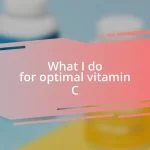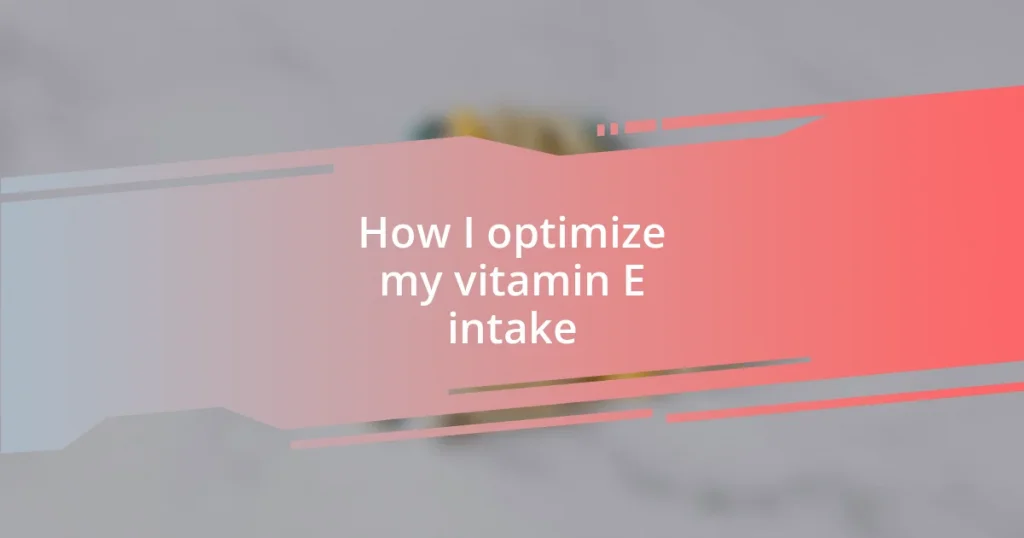Key takeaways:
- Vitamin E serves as a powerful antioxidant that enhances skin health and supports immune function.
- Daily vitamin E intake recommendations vary by age and gender, with adults needing about 15 mg and children requiring lower amounts.
- Incorporating vitamin E-rich foods into meals and monitoring its effects can lead to improved skin hydration and energy levels.
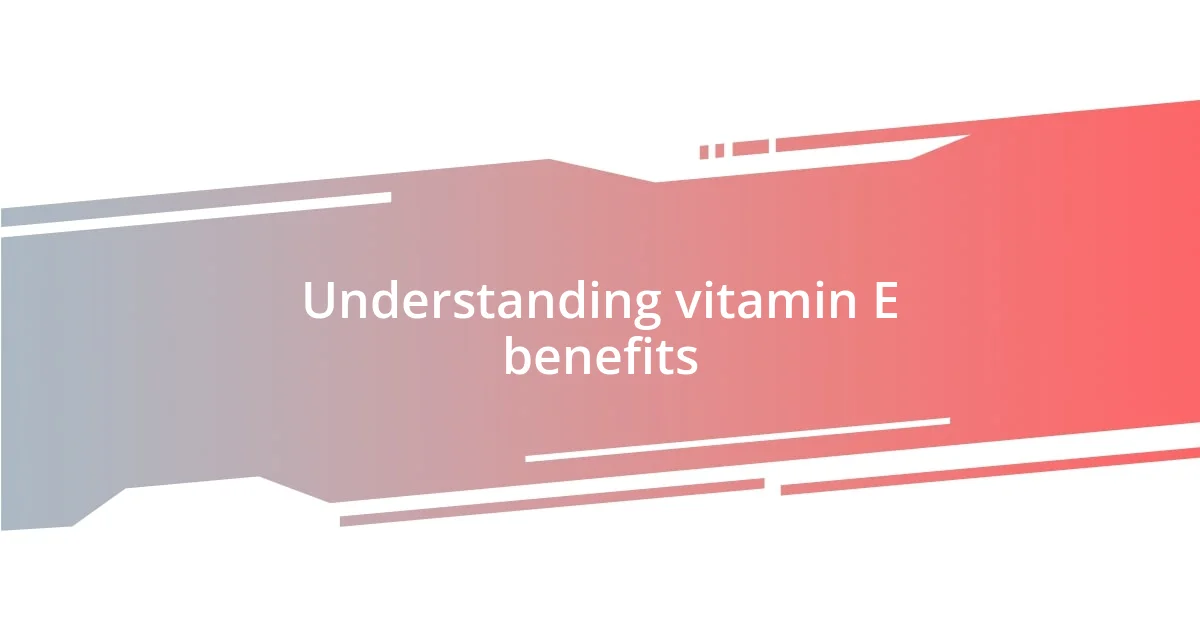
Understanding vitamin E benefits
Vitamin E is often heralded for its role as a powerful antioxidant. I remember the first time I learned this; I was fascinated! It helps combat oxidative stress in our bodies, which is crucial because we’re exposed to so many free radicals in our daily lives. Isn’t it reassuring to know that something as simple as a vitamin can play such a significant role in our overall health?
One of the most rewarding aspects of incorporating vitamin E into my diet has been noticing improvements in my skin health. After making a conscious effort to include more vitamin E-rich foods like almonds and spinach, I found that my skin felt more vibrant and hydrated. Have you ever looked in the mirror and just felt that glow? That’s what I experienced, and it motivated me to explore even more ways to optimize my intake.
Additionally, vitamin E supports immune function, which I think is especially important for staying healthy year-round. I always strive to keep my immune system robust, and knowing that vitamin E plays a part in that gives me peace of mind. It’s fascinating how one nutrient can contribute to so many aspects of our well-being, isn’t it?
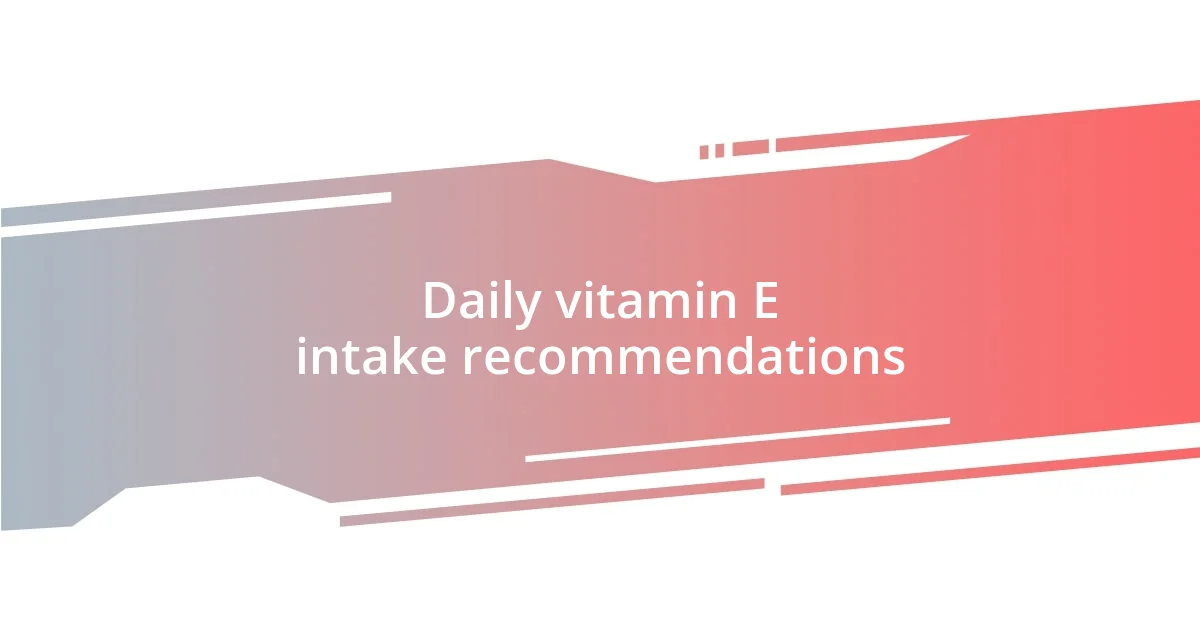
Daily vitamin E intake recommendations
Daily vitamin E intake varies based on age and gender. For instance, I’ve found that adult women need about 15 mg daily, while men typically require 15 mg as well. It’s always a good idea to pay attention to these recommendations, as I believe understanding our specific needs can significantly enhance our health.
I remember a time when I mistakenly thought that as long as I consumed any vitamin E source, I was covered. But then I realized that the intake recommendations aren’t just numbers; they reflect the unique nutritional needs our bodies have at different stages in life. For children, the recommended amounts are lower, ranging from 4 mg for infants to 11 mg for older kids. Seeing these specifics helped me tailor my family’s diet to ensure everyone gets what they need.
Here’s a quick comparison table that highlights the daily recommended intake for different age groups:
| Age Group | Recommended Daily Intake (mg) |
|---|---|
| Infants (0-6 months) | 4 |
| Children (1-3 years) | 6 |
| Children (4-8 years) | 7 |
| Children (9-13 years) | 11 |
| Teens (14-18 years) | 15 |
| Adults (19 years and older) | 15 |
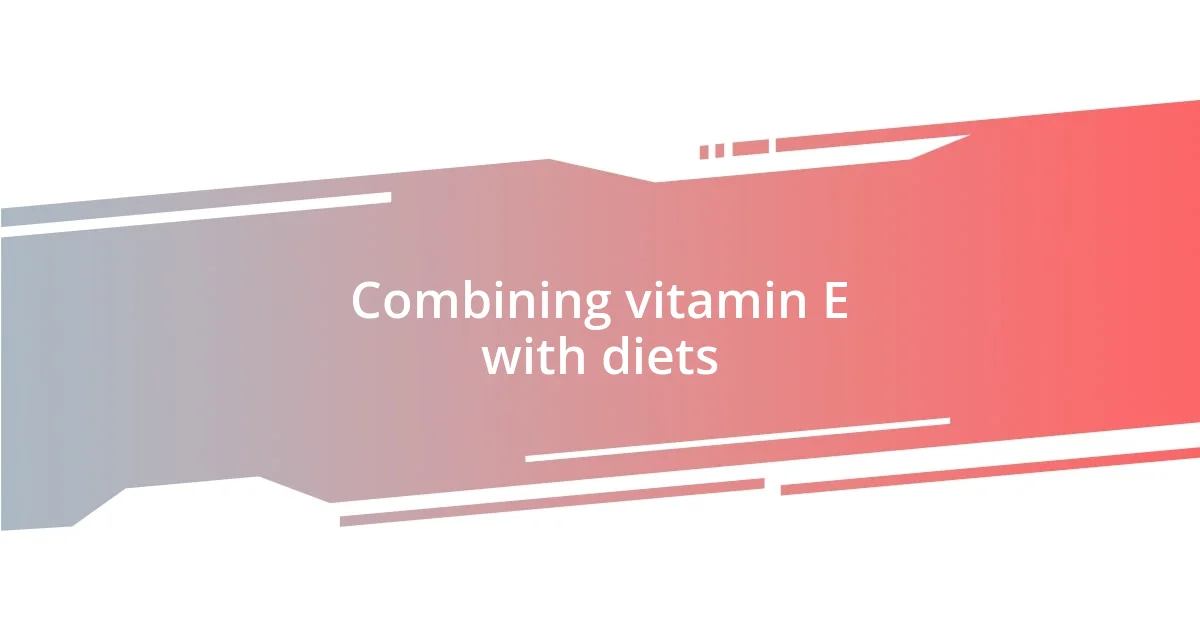
Combining vitamin E with diets
Incorporating vitamin E into my meals has become a delightful challenge that I enjoy tackling. For me, it’s not just about taking supplements—it’s about blending nutrient-rich foods. For instance, I often toss a handful of sunflower seeds into my morning yogurt or salads. The seeds add a satisfying crunch and a boost of that vital nutrient. It’s these small adaptations that make my meals both tasty and health-enhancing.
Here’s a selection of foods that can help optimize your vitamin E intake:
- Nuts & Seeds: Almonds, hazelnuts, and sunflower seeds are excellent sources.
- Green Leafy Vegetables: Spinach and kale not only offer vitamin E but also a host of other nutrients.
- Oils: Using olive oil or sunflower oil in cooking or salads can significantly increase your intake.
- Fish: Salmon and rainbow trout are not just delicious but also provide vitamin E and omega-3s.
- Fruits: Avocado and kiwi are great for a vitamin E boost while adding flavor to your day.
I’ve found that being mindful of these foods not only elevates my vitamin E levels but also enhances my overall cooking experience. I remember the first time I experimented with making an avocado toast topped with crushed almonds; it felt like a gourmet dish right at home! The satisfaction of nourishing my body with something so simple yet impactful is truly fulfilling.
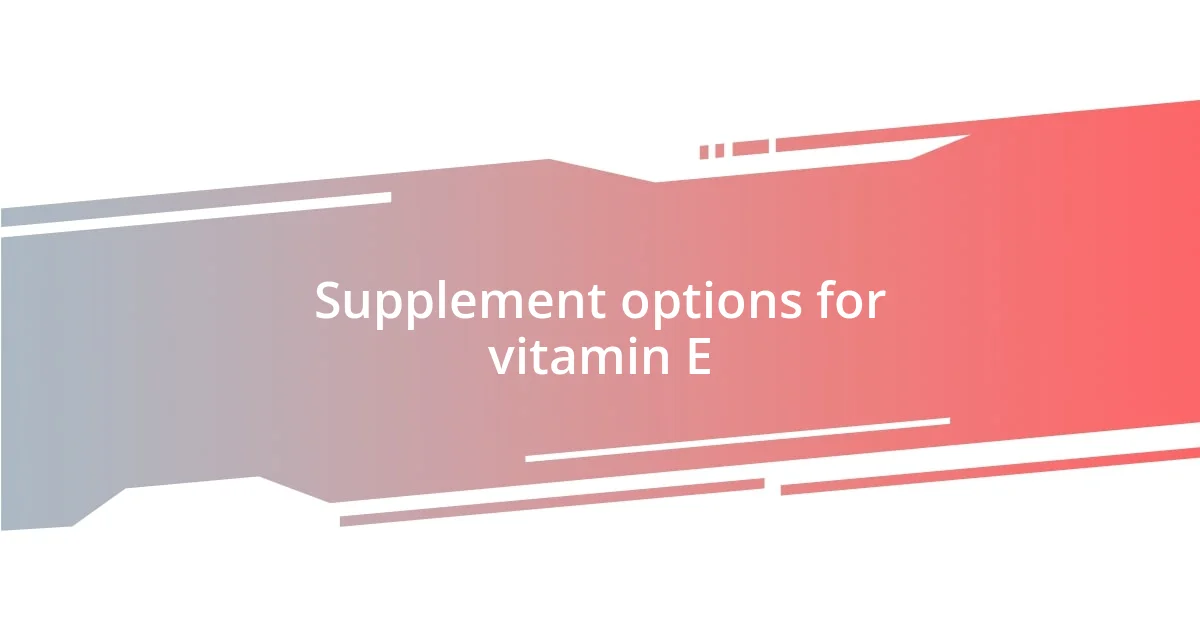
Supplement options for vitamin E
When it comes to supplementing vitamin E, I’ve often found myself weighing the different options available. Supplements typically come in two forms: natural and synthetic. Natural vitamin E (often labeled as d-alpha-tocopherol) tends to be more bioavailable, meaning our bodies absorb it better than its synthetic counterpart (dl-alpha-tocopherol). It’s an intriguing detail, isn’t it? Choosing the right form can really impact how effectively you optimize your intake.
I’ve personally experimented with both capsule and oil forms of vitamin E supplements. While the capsules are convenient for on-the-go lifestyles, I discovered that the oil can be quite versatile. I sometimes add a few drops to my smoothies or drizzle it over salads. This not only boosts my vitamin E levels but also makes those dishes feel more indulgent. Have you ever thought about how a simple enhancement can elevate an everyday meal?
Another option that resonates with me is combining vitamin E with other supplements. For example, I’ve learned that pairing it with omega-3 fatty acids can enhance its effectiveness. This was particularly eye-opening when I discovered this synergy while searching for ways to support skin health during the dry winter months. I decided to try a combined supplement, and the results were noteworthy—I noticed improvements in both my skin’s hydration and my overall well-being. It’s fascinating how pairing the right supplements can lead to a more holistic approach to health!
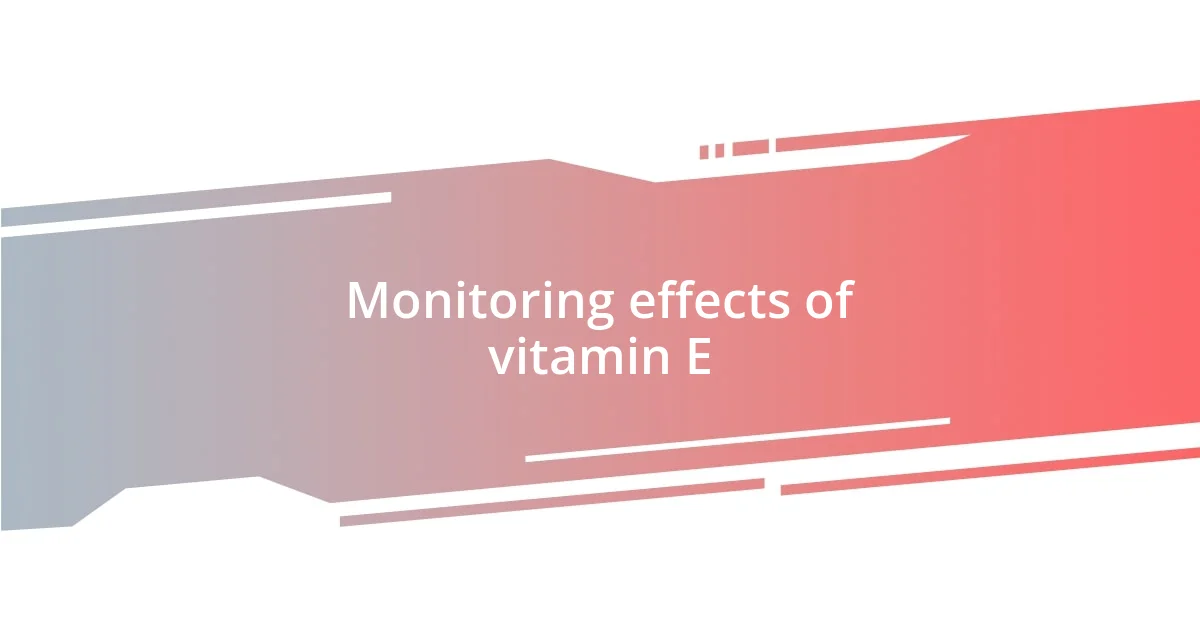
Monitoring effects of vitamin E
Monitoring the effects of vitamin E on my health has been both enlightening and rewarding. I started keeping a simple journal to track any changes I noticed after increasing my intake. Noticing improvements in my skin’s elasticity and a reduction in dryness was fascinating—could this really be linked to my enhanced vitamin E levels? I remember vividly the first time I realized my skin felt softer; it was as though I’d discovered a hidden treasure simply by being more mindful.
I also pay attention to how my energy levels fluctuate with my vitamin E consumption. For instance, I tend to feel more energetic on days when I incorporate a variety of vitamin E-rich foods into my meals. Have you ever had a day where everything just clicks into place, and you feel vibrant? That’s how I feel when I add more nuts or leafy greens into my diet. It’s almost like my body thanks me for nurturing it with such vital nutrients.
Sometimes, I conduct little experiments—changing my diet for a week or two to see if I notice any marked differences. I distinctly recall when I made a conscious effort to include more sunflower seeds in my snacks. It was surprising to find that, alongside a clearer complexion, my immune system felt stronger as I seemed to catch fewer colds that season. Monitoring these changes not only keeps me informed but also motivates me to stay on track with my vitamin E journey. Isn’t it remarkable how our bodies respond to the small decisions we make?









